The dishwasher is a work horse appliance. If it stops running, you quickly feel the pain of not having one. Trust me on this. My new dishwasher has conked out four times in one year. 4!
We went through 1) a rock stuck in the drain to 2) the sprayers not working properly to 3) the door not sealing to 4) a leak in the drain line. Not surprisingly, now I take great care to keep our dishwasher clean and running smoothly. After a bit of research, I learned the best way to clean a dishwasher (vinegar and baking soda, duh) and how to make it run more efficiently.
How to Clean a Dishwasher
Before getting started, you’ll want to gather a few easy-to-find supplies.
- White Vinegar
- Baking Soda
- Soft, clean dishtowel
- Soft bristle brush
- Toothbrush
1. Clean the filter
Most new dishwashers have filters that need to be cleaned manually. It’s part of what makes newer dishwasher quieter, but you’ll need to be more diligent about removing gunk trapped in the filter. When it gets clogged, water doesn’t drain as well and you’ll start to get funky smells.
Pick one day a week, like Sunday, to empty the dishwasher, pull out the bottom rack, and then remove the filter. It’s usually easy to unscrew and take apart, but check with your owner’s manual if you have questions. Give the parts a good rinse and scrub in the sink.
Food can also get stuck in the spray arms. If dishes aren’t getting fully cleaned, this could be the reason. You can take out the spray arms and check for clogs. A toothpick works well to dislodge whatever is trapped in there. Use a toothbrush dipped in white vinegar to clean out the sprayer holes and get rid of anything gross.
Then replace the sprayer arm and put the bottom rack back inside the dishwasher.
2. Clean the door panel
While a grimy dishwasher door won’t affect how your machine runs, I’ve found that grease, food and fingerprints can build up quickly— especially on those high-touch areas, like the door handle. It’s gross to look at and it’s unsanitary, so you might as well give the door a deep clean while you’re at it.
Pour a little white vinegar on a clean dishtowel and wipe down the inside and outside of the door panel. If you notice any grime that just won’t seem to budge (this is usually a bigger problem inside the dishwasher), sprinkle a little baking soda on the spot and gently scrub it with a soft bristle brush.
3. Get rid of any grime on the gasket
Dirt and grime have a tendency to accumulate on the gasket around the door frame, which can weaken your dishwasher’s watertight seal. Using an old toothbrush and a little white vinegar, gently scrub down the gasket to get rid of any residue.
4. Clean dishwasher with vinegar
White vinegar is excellent for removing hard water and soap buildup, along with any lingering odors. Add 2 cups of vinegar to a clean dishwasher-safe bowl or measuring cup and place it in the top rack. (Note: there’s conflicting advice about whether to put the vinegar on the top or bottom rack. I’ve not seen any evidence on why it matters so do whichever you prefer.)
Then run the dishwasher through a cleaning cycle on the hottest setting with no detergent (and no dirty dishes, obvs). The vinegar will be dispersed over the dishwasher, clearing out stains and smells and leaving it sparkling clean.
5. Clean dishwasher with baking soda
If funky, musty odors are still lingering after the vinegar cleaning, then it’s time to try baking soda. Sprinkle a cup or two of baking soda around the bottom of the dishwasher.
Then run a cleaning cycle again with hot water. The baking soda will help clear out unpleasant smells and also make the inside of the dishwasher shine.
6. Make the dishwasher run better
Now that the dishwasher is cleaned and deodorized, it’s time for a lesson in ways to make the dishwasher run more effectively. Because, trust me, you don’t want to wait two weeks for the repairman without a dishwasher.
Prevention is your friend.
See above for checking and cleaning the filter every week. Getting into the habit of actually cleaning the dishwasher on a regular basis will save you time, money, and manual dishwashing down the road.
Don’t overcrowd.
We’re all guilty of the Tetris-like dishwasher game to find a way to squeeze in one more cup. Before you go cramming more in, remember that dishes too close together won’t get rinsed and cleaned as well. And is there anything more irritating than unloading the dishwasher, only to find cups and bowls with stuck on food?
Pre-rinse but don’t prewash.
Speaking of stuck on food, it’s a waste of time and water to prewash dishes before putting them in the dishwasher. However, it is helpful to give plates a quick rinse to remove leftover food. Especially if it will be a day or so before you run the dishwasher. The dishes will be easier to wash, and so will your weekly filter cleaning.
Run hot water & the garbage disposal before starting.
I’ve started running the sink faucet until I get hot water before starting the dishwasher. While the water is heating up, I run the garbage disposal to make sure it’s cleared out since my dishwasher drains through the disposal. That way when I start the dishwasher it will fill up with hot water instead of cold, and it can easily drain out food waste.
Bump up the temperature on your water heater.
To sanitize both your dishes and dishwasher effectively, your hot water should be around 120°F.
Got a leak? Check the seals.
The rubber seals around the door can get gross and sticky, which can lead to a bad seal…which can lead to leaks. Every so often run over the area with a wet rag to keep things clean.
One more thing: you can also make your own dishwasher detergent pods! Since they’re natural, you’ll feel better knowing what goes on your dishes.
How often should you clean your dishwasher?
While some say that you should clean your dishwasher (in some form or another) every day, I think that’s completely unrealistic. But it is easier to maintain a clean dishwasher than to do a deep clean, so here’s a simple cleaning schedule to keep you on track. Feel free to adjust this to meet your own needs.
Weekly: Remove food remnants floating around the bottom of the dishwasher
Monthly: Disinfect the dishwasher door, wipe down the gasket, and check the filter
Every 3-4 Months: Clean the sprayer arm and do a hot, disinfectant wash with white vinegar
Can I use bleach to clean a dishwasher?
I don’t recommend it. If you have a dishwasher with a stainless steel interior, bleach can cause a chemical reaction that may weaken the finish. Also, since bleach is pretty toxic, I don’t like using it on or near surfaces that come in contact with food – but that’s just me!
188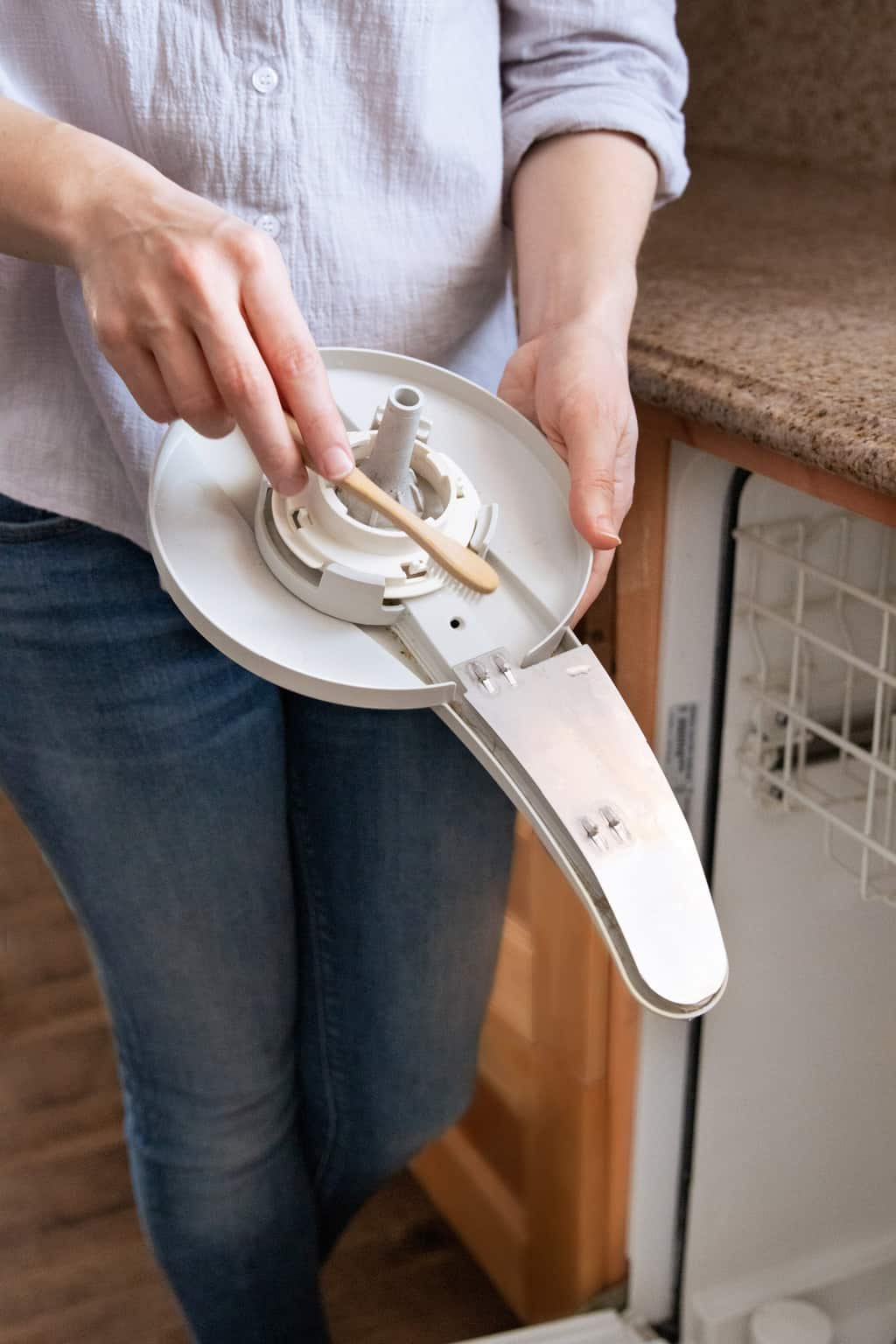
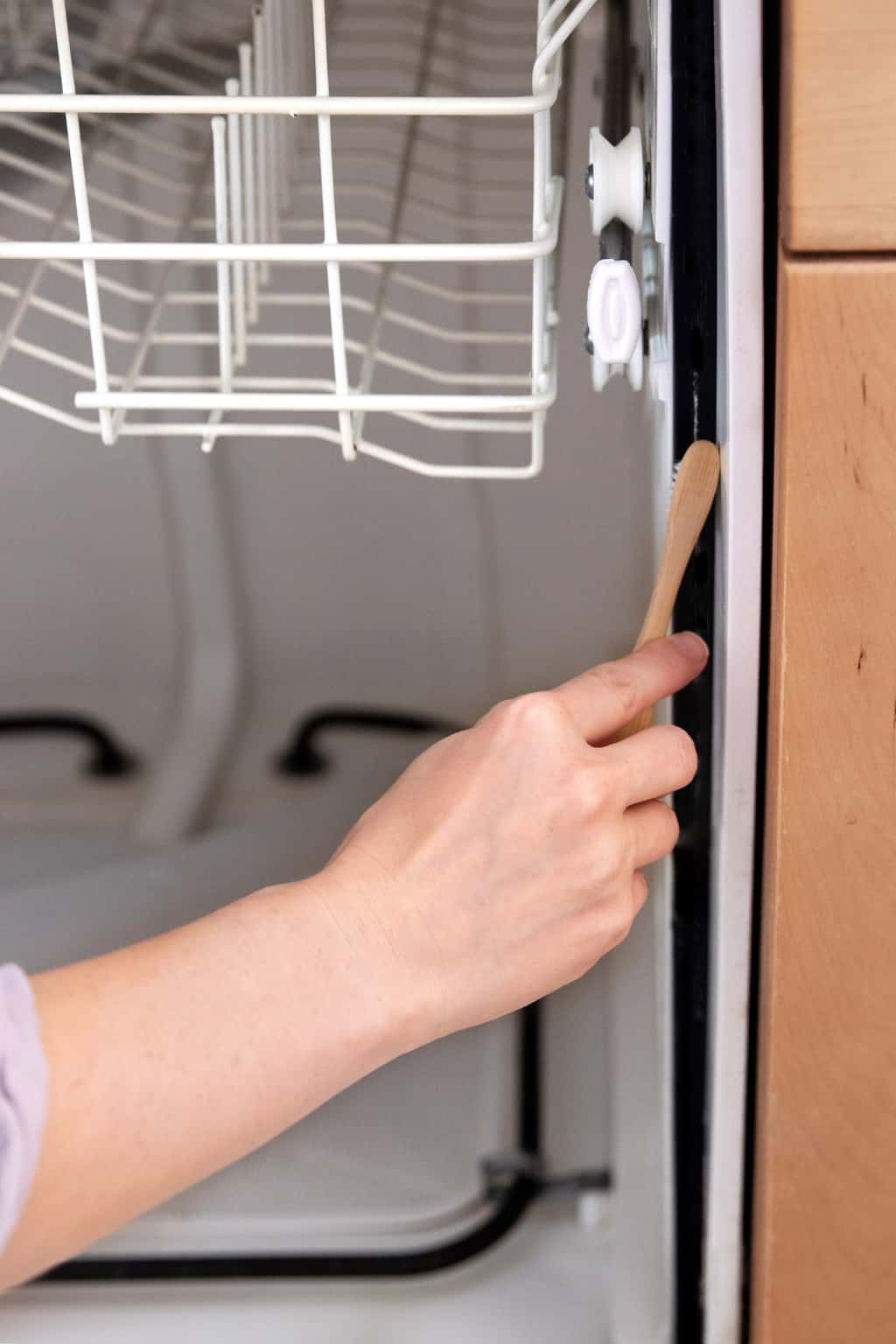
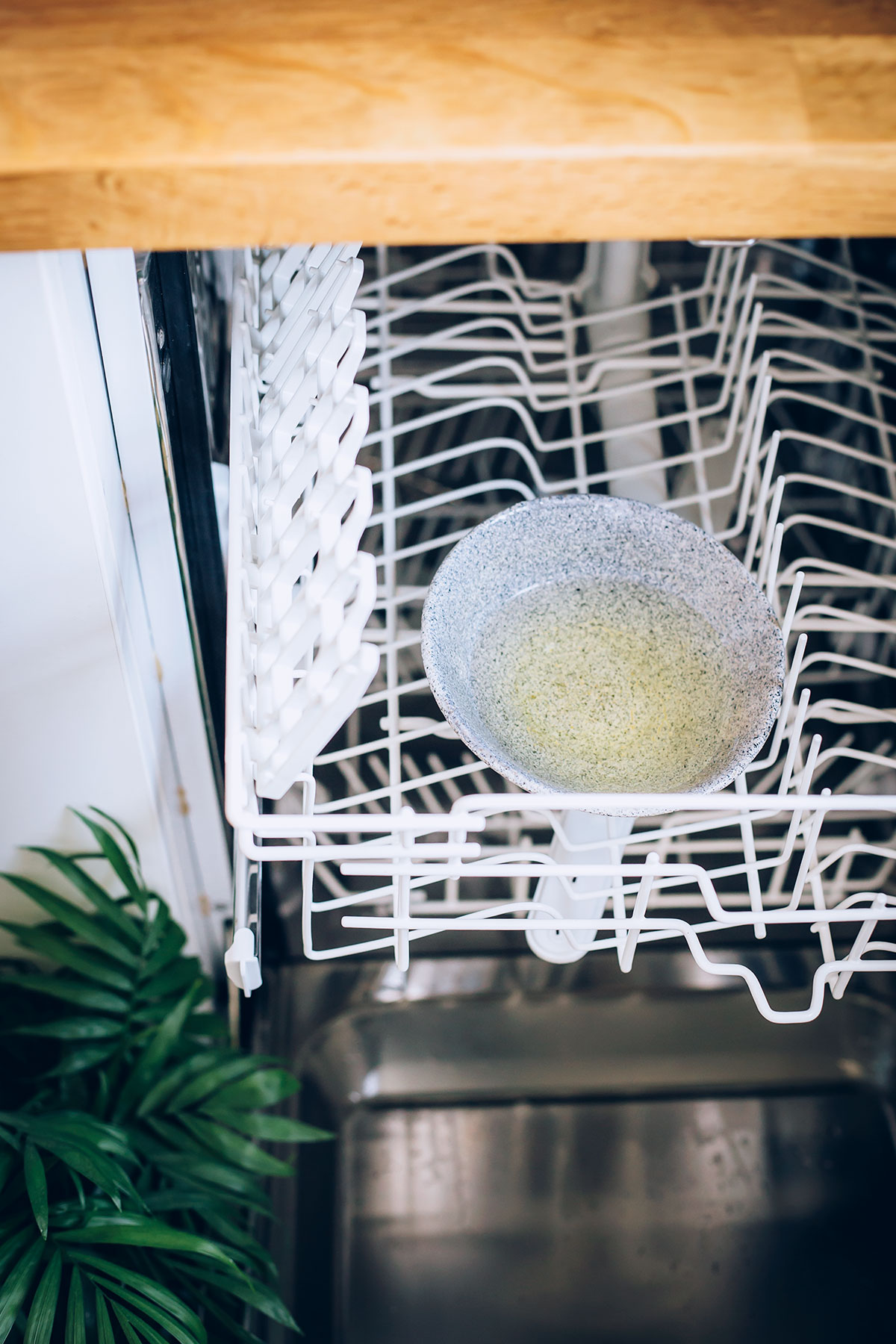
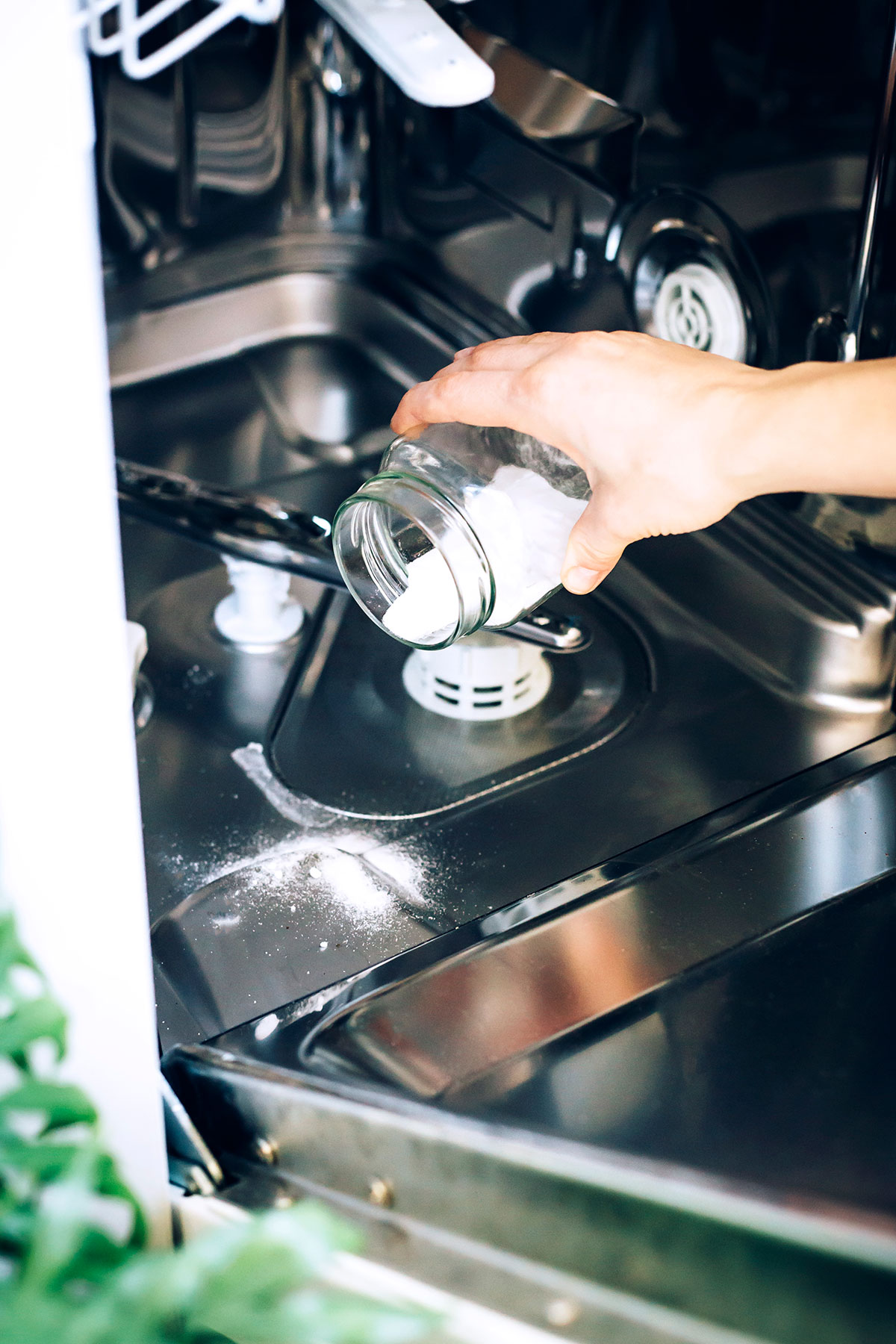
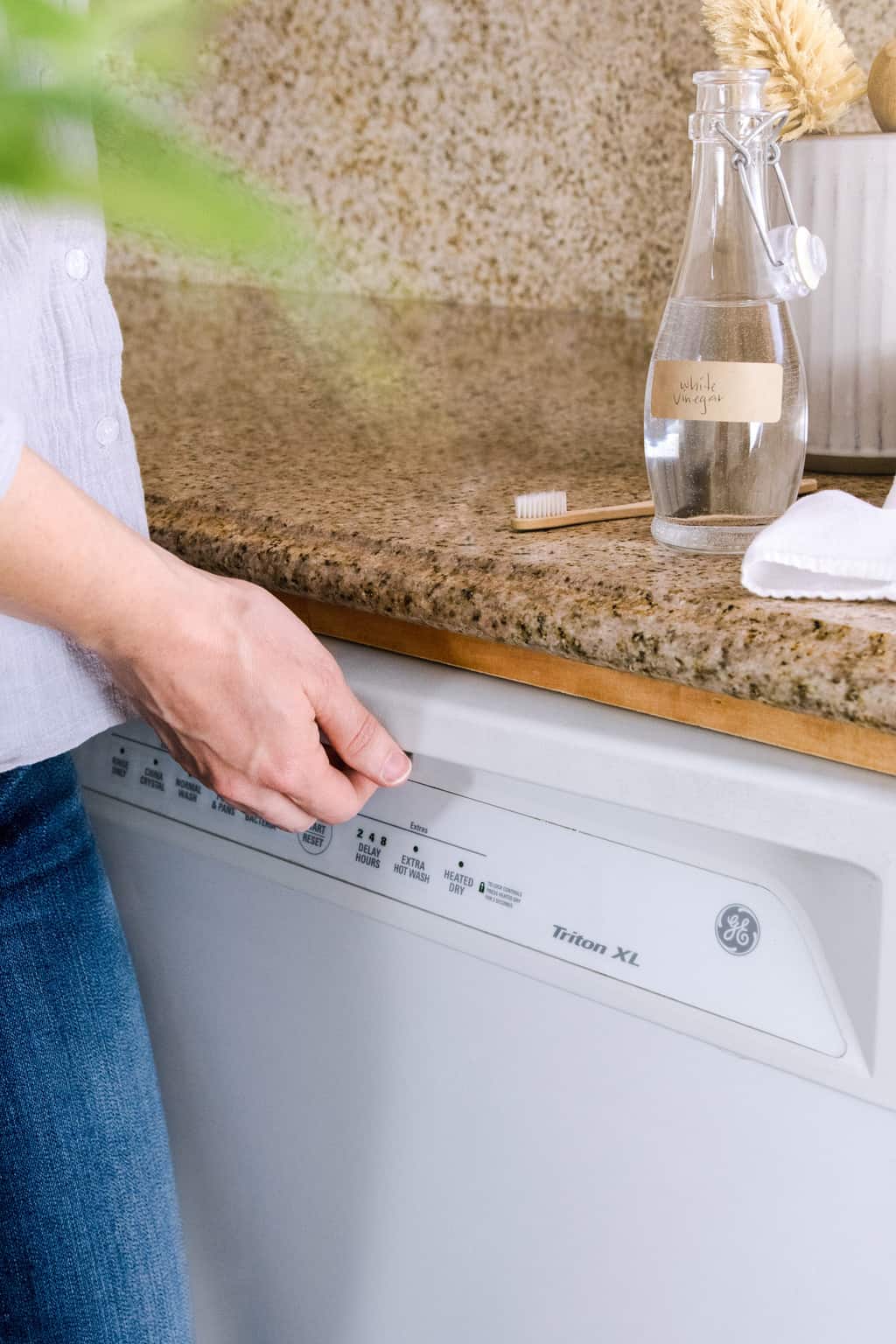
Leave a Reply